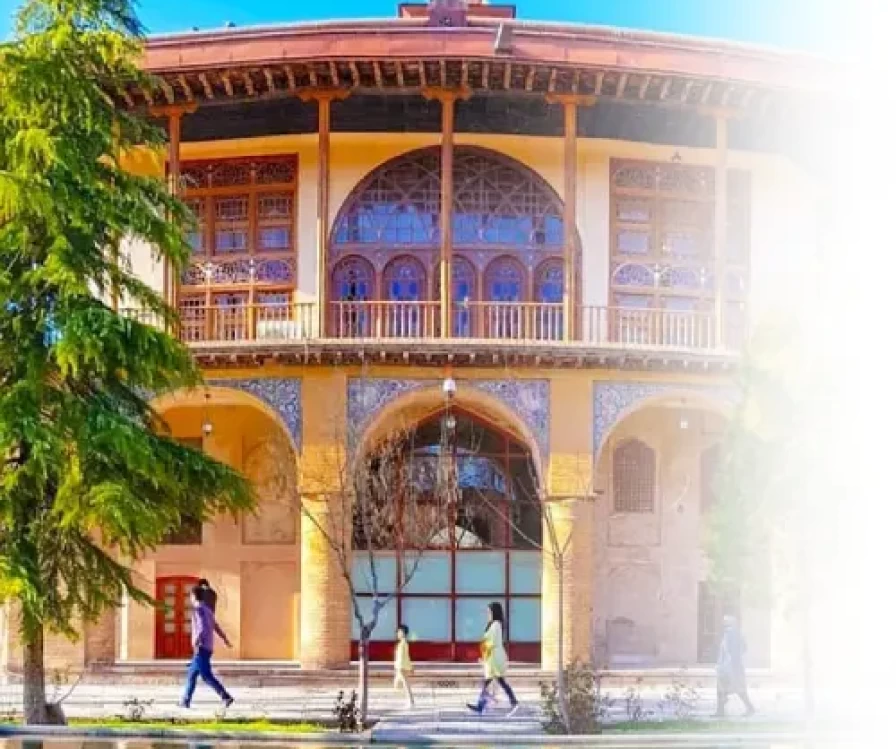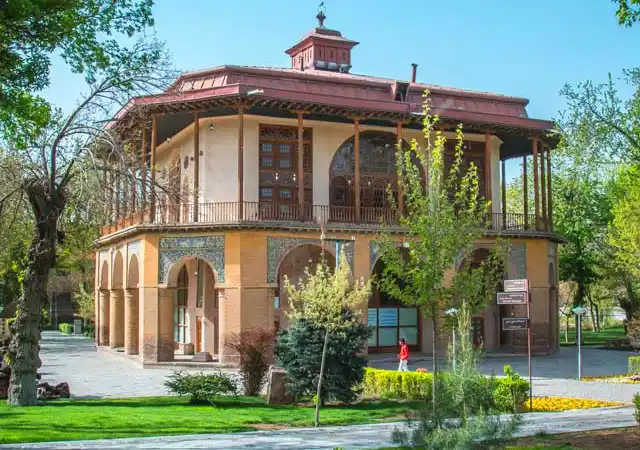
Chehel Sotoun Palace Qazvin





Chehel Sotoon Palace Qazvin
Chehel Sotoun Palace, commonly known as the Kolah Farangi Palace, is the only remaining pavilion from the royal palaces of Shah Tahmasb's era. Located in the heart of Qazvin city, specifically in Azadi Square (also known as Sabzeh Meydan), this building was referred to as Kolah Farangi during the Safavid period when Qazvin served as the capital.
In the year 951 AH (1544 AD), Shah Tahmasb Safavid moved the capital from Tabriz to Qazvin, and later to Isfahan, due to the threat from the Ottoman Empire and the risk of an impending attack. Many of the architectural designs that were later built in Isfahan had their origins in Qazvin. Shah Tahmasb directed his skilled architects to create a square garden and construct various buildings within it, including halls, porches, and beautiful pools. The Kolah Farangi building, along with the grand entrance known as Ali Qapu (which means "great door" in Turkish), is one of the few remaining structures from the Safavid gardens in Qazvin. It is said that a door from the shrine of Imam Ali in Najaf was brought to Iran, possibly first to Qazvin and then to the Ali Qapu Palace in Isfahan. This building, known as the Kolah Farangi Palace, was restored during the Qajar period by Mohammad Baqir Saad al-Saltaneh, the governor of Qazvin at that time, and it was named Chehel Sotoun.
Chehel Sotoun Palace is an eight-sided building with two floors, covering an area of approximately 500 square meters. A portico with brick columns and semicircular arches surrounds the structure, and above it is a porch supported by wooden columns. The layout features a design with cross axes and an outward orientation, with the ground floor ceiling adorned with intricate muqarnas and the upper floor ceiling covered with decorative canopies.
On the first floor, you can find paintings from the renowned Qazvin school of miniature art, which is celebrated worldwide. These paintings consist of three distinct layers, each reflecting different historical periods. In the past, they were vibrant with colors and adorned with gold leaf. Each layer corresponds to a specific dynasty, starting from the rise of Nader Shah and the Afsharids, and concluding with the Qajar dynasty. Unfortunately, the names and signatures of the artists remain unknown. However, Abdi Beg Shirazi, a poet and historian during Shah Tahmasb's reign, described the royal buildings in detail in his poetry but did not mention the names of the artists or architects. Nonetheless, he credited the wall paintings of both the exterior and interior of Chehel Sotoun Palace to artists such as Mirza Ali Naqqash, Mozaffar Ali Naqqash, Ali Asghar Kashani, Abd al-Jabbar Esterabadi, and Reza Abbasi, who was one of the most talented painters of his time. It is important to note that Chehel Sotoun Palace was registered as a historical monument in Iran in 1334 AH (1955 AD).
We look forward to welcoming you soon in Iran, Qazvin Province, and the city of Qazvin. We hope to see you in the very near future!
Contact Us
+989054577261